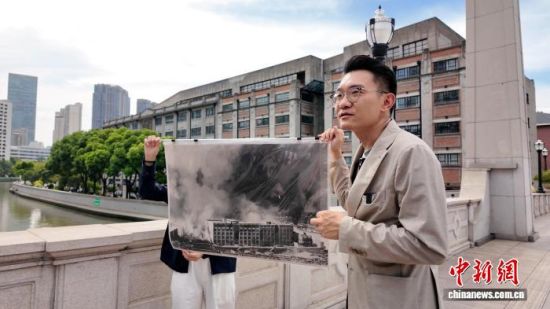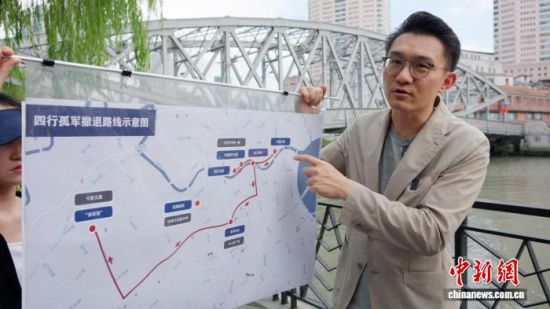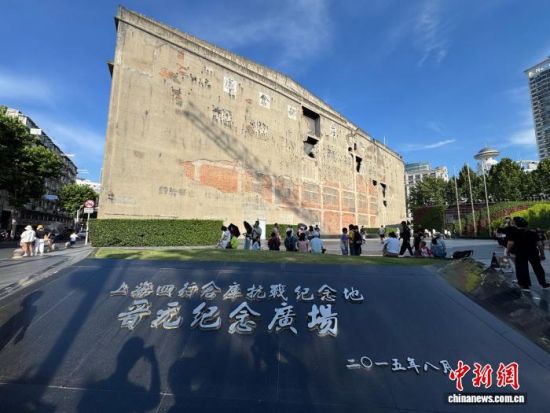«Seeing the former battlefield transformed into a public square where citizens relax and play, I find it surreal, yet it evokes a very real appreciation for the beautiful life we have today,» remarked the founder and CEO of Heart City, Zhu Yining. On the banks of Suzhou Creek, Shanghai’s Sihang Warehouse stands quietly. The bullet holes and artillery marks on its west wall have been deliberately preserved, serving as the most vivid «history textbook.»
On October 26, 1937, Xie Jinyuan led over 420 officers and soldiers to retreat and defend this location. He told his troops, «We are Chinese soldiers. Behind us are 400 million compatriots. We must defend the nation’s dignity with our lives!» Over four days, the defenders repelled more than ten Japanese assaults, killing and wounding over 200 enemy soldiers. «This battle took place in the heart of Shanghai, adjacent to the International Settlement at the time, visible to both Chinese and foreigners. While Chinese forces had suffered repeated setbacks, the staunch resistance at Sihang Warehouse greatly boosted national morale during the war,» explained the curator of the Shanghai Sihang Warehouse Anti-Japanese War Memorial Hall.
Since the memorial hall opened to the public in 2015, visitor numbers have continued to grow. From January to July 2025, visits exceeded 1 million, a 13.9% increase year-on-year. However, as a traditional memorial, it has long presented history in a static manner. «How can we create a deeper resonance?»

To extend the historical experience from the memorial hall into urban spaces, the Shanghai Sihang Warehouse Anti-Japanese War Memorial Hall partnered with the cultural organization «Heart City» to develop and launch a Citywalk tour themed on the footsteps of the «Eight Hundred Heroes.» The route follows Suzhou Creek, recreating the true historical traces and fearless courage of the heroes. Notably, this initiative received support from Shanghai’s Jing’an District Cultural Development Special Fund.
«The response to this walking tour has been unprecedented. The first two sessions sold out within two to three minutes, with thousands more waiting to sign up,» Zhu Yining shared. From May 18 to October 26, this «path of history» will connect spaces through walking, activate memories through experience, and bridge past and present through interaction—transforming the spirit of resistance from a narrated subject into a tangible experience, turning silent historical spaces into participatory sites of public memory. Zhu revealed that the Citywalk is scheduled for eight sessions this year, including two in English specifically for foreign visitors.
So far, two sessions have been prepared. Group after group of participants have stepped out of the memorial hall, tracing the footsteps of the Eight Hundred Heroes along Suzhou Creek, weaving a «living history network.»
Starting from Sihang Warehouse, guides no longer simply state, «This is where the retreat began.» Instead, they encourage observation of the architectural layout. «Why was Sihang Warehouse originally built here?» «Why did the defenders choose this as their fortress?» As participants observe and compare the Suzhou Creek waterway and the warehouse structure, they gradually understand the choices made back then. Standing on Xizang Road Bridge, looking out over both banks of Suzhou Creek and comparing historical photos, they discuss the route taken by the «lonely army,» turning the historical path into an empathetic reflection. The «life-and-death retreat» at Zhejiang Road Bridge, the four years in the solitary camp (now Jinyuan Li)… Observations and explorations initiated by the participants themselves turn urban spaces into an «interactive history classroom.»

The value of this sense of participation becomes clearer in participant feedback. «Many people said they often walked along Suzhou Creek and felt they knew Shanghai well. But after joining this Citywalk, they learned so many historical stories about Sihang Warehouse and the banks of Suzhou Creek,» Zhu Yining said. «Many participants were reluctant to leave afterward, gathering around us to ask for more details.»




